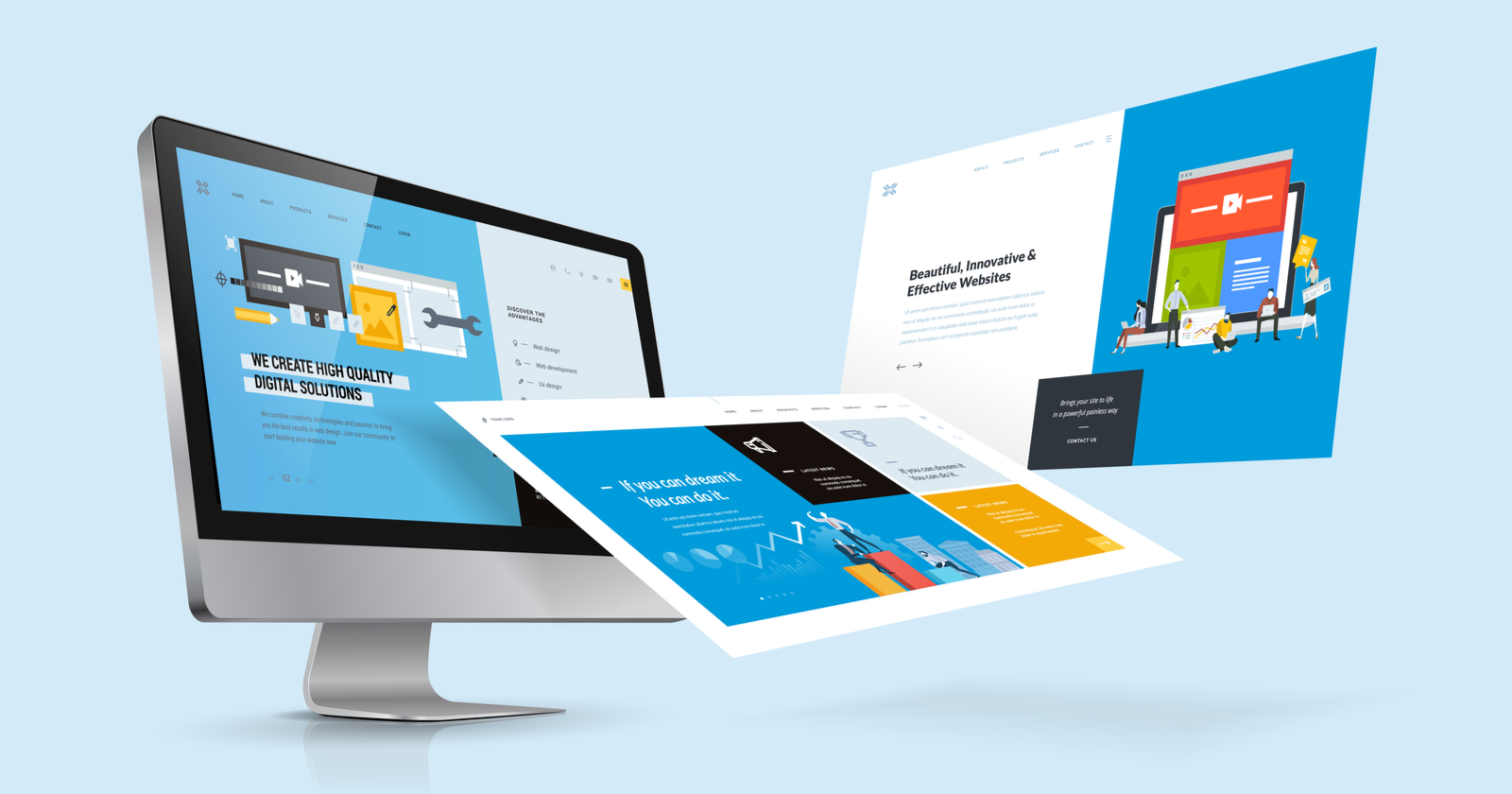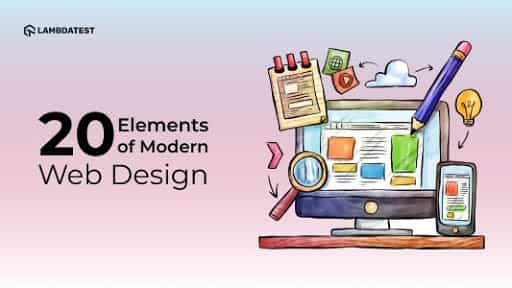All Categories
Featured
Table of Contents
- – Why Is Web Design Important? - 6 Reasons To In...
- – Responsive Web Design - A List Apart Tips and...
- – Google Web Designer - Home Tips and Tricks:
- – Boxcar Studio - Wordpress & Drupal Web Design...
- – The Leader In Website Design – Squarespace Ti...
- – What Is Web Design, How To Do It Right And Be...
- – Web Development Bachelor's Degree - Full Sai...
- – Web Design - Uci Division Of Continuing Educ...
- – Web Design Company In Orlando, Florida And B...
- – What Is Web Design (And How Do I Get It Righ...
- – Awwwards - Website Awards - Best Web Design ...
Why Is Web Design Important? - 6 Reasons To Invest In Site ... Tips and Tricks:
Quick summary Usability and the energy, not the visual style, determine the success or failure of a site. Because the visitor of the page is the only individual who clicks the mouse and for that reason decides whatever, user-centric style has established as a standard approach for successful and profit-oriented web style - web design frederick md.
and the utility, not the visual design, identify the success or failure of a site. Because the visitor of the page is the only individual who clicks the mouse and for that reason decides everything, user-centric style has become a basic technique for successful and profit-oriented web style. After all, if users can't utilize a feature, it may also not exist.
g. where the search box ought to be put) as it has already been done in a variety of short articles; rather we focus on the approaches which, used properly, can lead to more advanced design decisions and simplify the process of viewing provided details. Please see that you may be interested in the usability-related short articles we've released prior to: Principles Of Great Site Design And Effective Web Design Guidelines, In order to use the concepts effectively we first need to understand how users engage with websites, how they think and what are the standard patterns of users' habits.
Responsive Web Design - A List Apart Tips and Tricks:
Visitors glimpse at each new page, scan some of the text, and click the very first link that catches their interest or vaguely resembles the thing they're trying to find. There are large parts of the page they do not even look at. A lot of users look for something intriguing (or helpful) and clickable; as quickly as some promising prospects are found, users click.
If a page provides users with top quality content, they are ready to jeopardize the material with ads and the design of the site. This is the reason why not-that-well-designed websites with premium content get a lot of traffic over years. Content is more vital than the design which supports it.

Users don't check out, they scan. Notice how "hot" areas abrupt in the middle of sentences. This is normal for the scanning procedure. Extremely simple principle: If a website isn't able to meet users' expectations, then designer stopped working to get his job done correctly and the business loses money. The greater is the cognitive load and the less intuitive is the navigation, the more willing are users to leave the website and search for options.
Google Web Designer - Home Tips and Tricks:
Neither do they scan webpage in a linear fashion, going sequentially from one website section to another one. Rather users satisfice; they select the first affordable choice. As soon as they discover a link that looks like it may result in the objective, there is an excellent possibility that it will be instantly clicked.
It doesn't matter to us if we comprehend how things work, as long as we can utilize them. If your audience is going to imitate you're creating billboard, then design excellent signboards." Users desire to have the ability to control their internet browser and count on the consistent data discussion throughout the website.
If the navigation and site architecture aren't intuitive, the variety of enigma grows and makes it harder for users to comprehend how the system works and how to receive from point A to point B. A clear structure, moderate visual ideas and easily identifiable links can help users to find their course to their goal.
Boxcar Studio - Wordpress & Drupal Web Design ... - Ann Arbor Tips and Tricks:

claims to be "beyond channels, beyond products, beyond circulation". What does it imply? Given that users tend to explore websites according to the "F"-pattern, these three statements would be the first components users will see on the page once it is loaded. Although the design itself is easy and intuitive, to understand what the page has to do with the user needs to browse for the answer.
Once you have actually accomplished this, you can communicate why the system works and how users can benefit from it. Individuals won't use your website if they can't discover their way around it. 2. Don't Squander Users' Perseverance, In every project when you are going to provide your visitors some service or tool, try to keep your user requirements minimal.
Newbie visitors are prepared to, not filling long web forms for an account they may never use in the future. Let users check out the website and discover your services without requiring them into sharing private information. It's not reasonable to force users to enter an e-mail address to test the function.
The Leader In Website Design – Squarespace Tips and Tricks:
And that's what you want your users to feel on your web site. The registration can be done in less than 30 seconds as the form has horizontal orientation, the user doesn't even require to scroll the page.
A user registration alone suffices of an impediment to user navigation to cut down on inbound traffic. 3. Handle To Focus Users' Attention, As websites provide both static and dynamic content, some elements of the interface draw in attention more than others do. Obviously, images are more captivating than the text simply as the sentences marked as bold are more attractive than plain text.
Focusing users' attention to particular locations of the website with a moderate use of visual aspects can help your visitors to get from point A to point B without thinking about how it really is expected to be done. The less question marks visitors have, the they have and the more trust they can establish towards the business the website represents.
What Is Web Design, How To Do It Right And Best Skills - Rock ... Tips and Tricks:
4. Strive For Feature Direct exposure, Modern website design are usually slammed due to their approach of assisting users with aesthetically appealing 1-2-3-done-steps, big buttons with visual results and so on. However from the design point of view these aspects really aren't a bad thing. On the contrary, such as they lead the visitors through the website content in an extremely simple and easy to use way.
The site has 9 primary navigation alternatives which are visible at the very first glance. What matters is that the content is well-understood and visitors feel comfy with the method they interact with the system.
com gets straight to the point. No charming words, no overemphasized declarations. Rather a cost: just what visitors are searching for. An optimum solution for efficient writing is touse brief and succinct phrases (come to the point as quickly as possible), usage scannable design (categorize the content, use several heading levels, utilize visual aspects and bulleted lists which break the flow of consistent text blocks), usage plain and unbiased language (a promotion doesn't require to sound like advertisement; offer your users some sensible and unbiased reason they should use your service or stay on your site)6.
Web Development Bachelor's Degree - Full Sail University Tips and Tricks:
Users are hardly ever on a site to enjoy the design; furthermore, in many cases they are searching for the info despite the style - web design frederick md. Aim for simpleness instead of intricacy. From the visitors' viewpoint, the finest site style is a pure text, with no advertisements or more material obstructs matching precisely the question visitors used or the content they've been searching for.
Finch clearly presents the info about the website and provides visitors a choice of choices without overcrowding them with unnecessary content. Not only does it assist to for the visitors, but it makes it possible to view the details presented on the screen.
Complex structures are harder to check out, scan, examine and deal with. If you have the choice between separating two style segments by a visible line or by some whitespace, it's generally much better to use the whitespace option. (Simon's Law): the much better you handle to offer users with a sense of visual hierarchy, the much easier your material will be to view.
Web Design - Uci Division Of Continuing Education Tips and Tricks:
The same conventions and guidelines ought to be applied to all elements.: do the most with the least amount of hints and visual elements. 4 major points to be considered: simpleness, clarity, distinctiveness, and emphasis. Simplicity consists of just the components that are crucial for communication. Clearness: all elements must be developed so their significance is not unclear.
Conventions Are Our Buddies, Conventional design of site elements does not result in a dull web site. It would be an use problem if all websites had various visual discussion of RSS-feeds.
understand what they're getting out of a website navigation, text structure, search positioning etc. A normal example from usability sessions is to translate the page in Japanese (assuming your web users do not know Japanese, e. g. with Babelfish) and provide your use testers with a job to discover something in the page of various language.
Web Design Company In Orlando, Florida And Bangor, Maine Tips and Tricks:
Test Early, Test Typically, This so-called TETO-principle should be applied to every web style task as functionality tests often offer into considerable problems and issues related to a given design. Test not too late, not too little and not for the wrong factors.
Some important points to keep in mind: according to Steve Krug, and screening one user early in the task is much better than testing 50 near the end. Accoring to Boehm's very first law, mistakes are most regular during requirements and style activities and are the more pricey the later they are eliminated.
That indicates that you create something, test it, fix it and then check it once again. There might be issues which have not been discovered during the first round as users were almost blocked by other issues.
What Is Web Design (And How Do I Get It Right)? - 99designs Tips and Tricks:

This holds for designers. After you have actually worked on a site for few weeks, you can't observe it from a fresh perspective anymore. You understand how it is built and for that reason you understand precisely how it works you have the knowledge independent testers and visitors of your website would not have.
It can be linked to other areas such as graphic design, user experience, and multimedia arts, but is more aptly seen from a technological perspective. It has actually become a big part of people's everyday lives. It is difficult to picture the Web without animated graphics, various styles of typography, background, videos and music.

Throughout 1991 to 1993 the World Wide Web was born. Text-only pages might be seen utilizing an easy line-mode browser. There had been no integrated technique to graphic style elements such as images or noises.
Awwwards - Website Awards - Best Web Design Trends Tips and Tricks:
The W3C was developed in October 1994 to "lead the Internet to its complete capacity by establishing common protocols that promote its evolution and guarantee its interoperability." This prevented any one company from monopolizing a propriety internet browser and programming language, which could have altered the effect of the Web as a whole.
As this has actually occurred the technology of the web has actually also moved on. There have likewise been substantial modifications in the way individuals utilize and access the web, and this has altered how websites are created.
Learn more about Lovell Media Group LLC or TrainACETable of Contents
- – Why Is Web Design Important? - 6 Reasons To In...
- – Responsive Web Design - A List Apart Tips and...
- – Google Web Designer - Home Tips and Tricks:
- – Boxcar Studio - Wordpress & Drupal Web Design...
- – The Leader In Website Design – Squarespace Ti...
- – What Is Web Design, How To Do It Right And Be...
- – Web Development Bachelor's Degree - Full Sai...
- – Web Design - Uci Division Of Continuing Educ...
- – Web Design Company In Orlando, Florida And B...
- – What Is Web Design (And How Do I Get It Righ...
- – Awwwards - Website Awards - Best Web Design ...
Latest Posts
Website Developer Near Me Frederick MD
Learn Web Design With Online Courses, Classes, & Lessons Tips and Tricks:
Responsive Design Best Practices - Google Search Central Tips and Tricks:
More
Latest Posts
Website Developer Near Me Frederick MD
Learn Web Design With Online Courses, Classes, & Lessons Tips and Tricks:
Responsive Design Best Practices - Google Search Central Tips and Tricks: